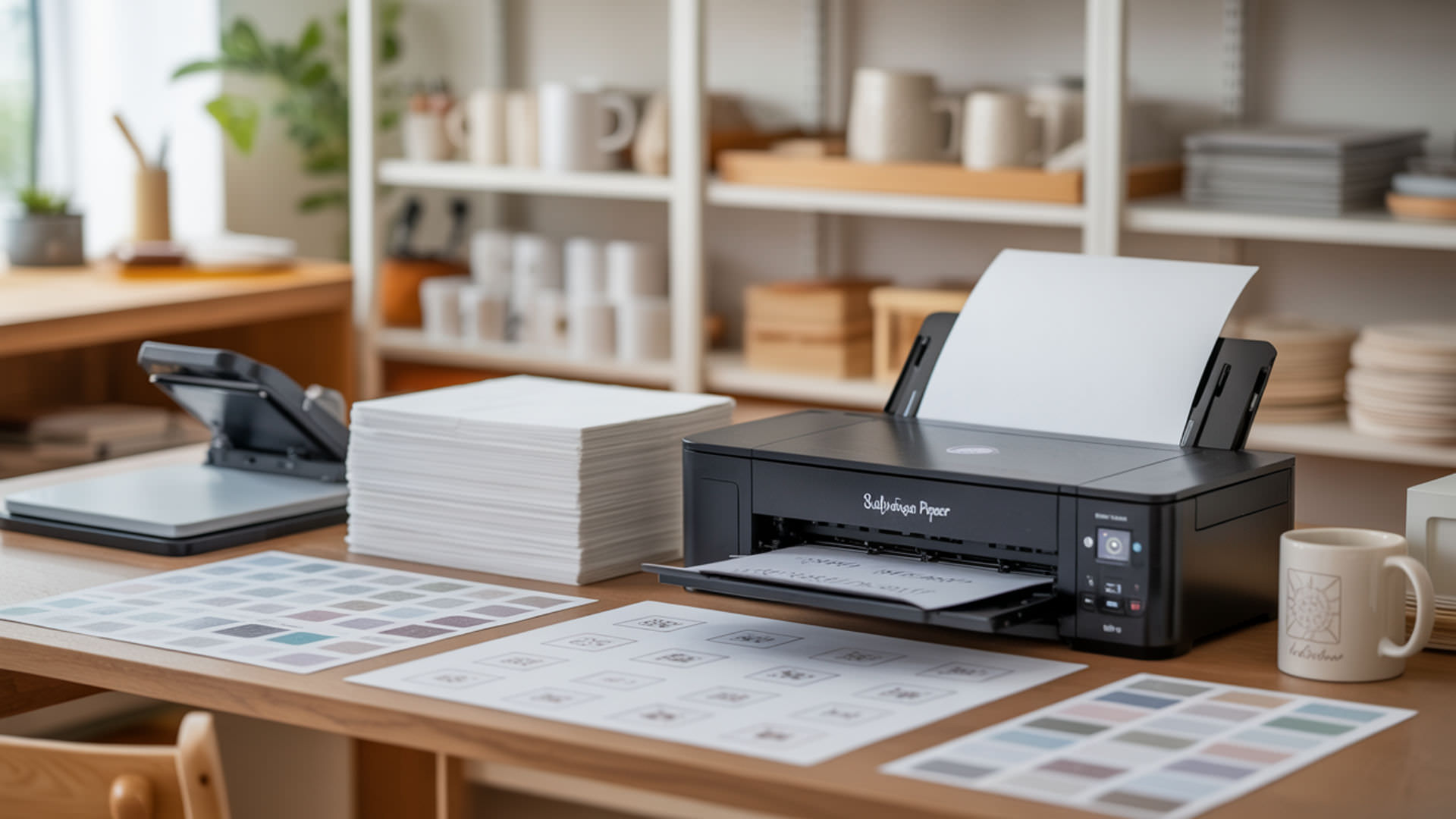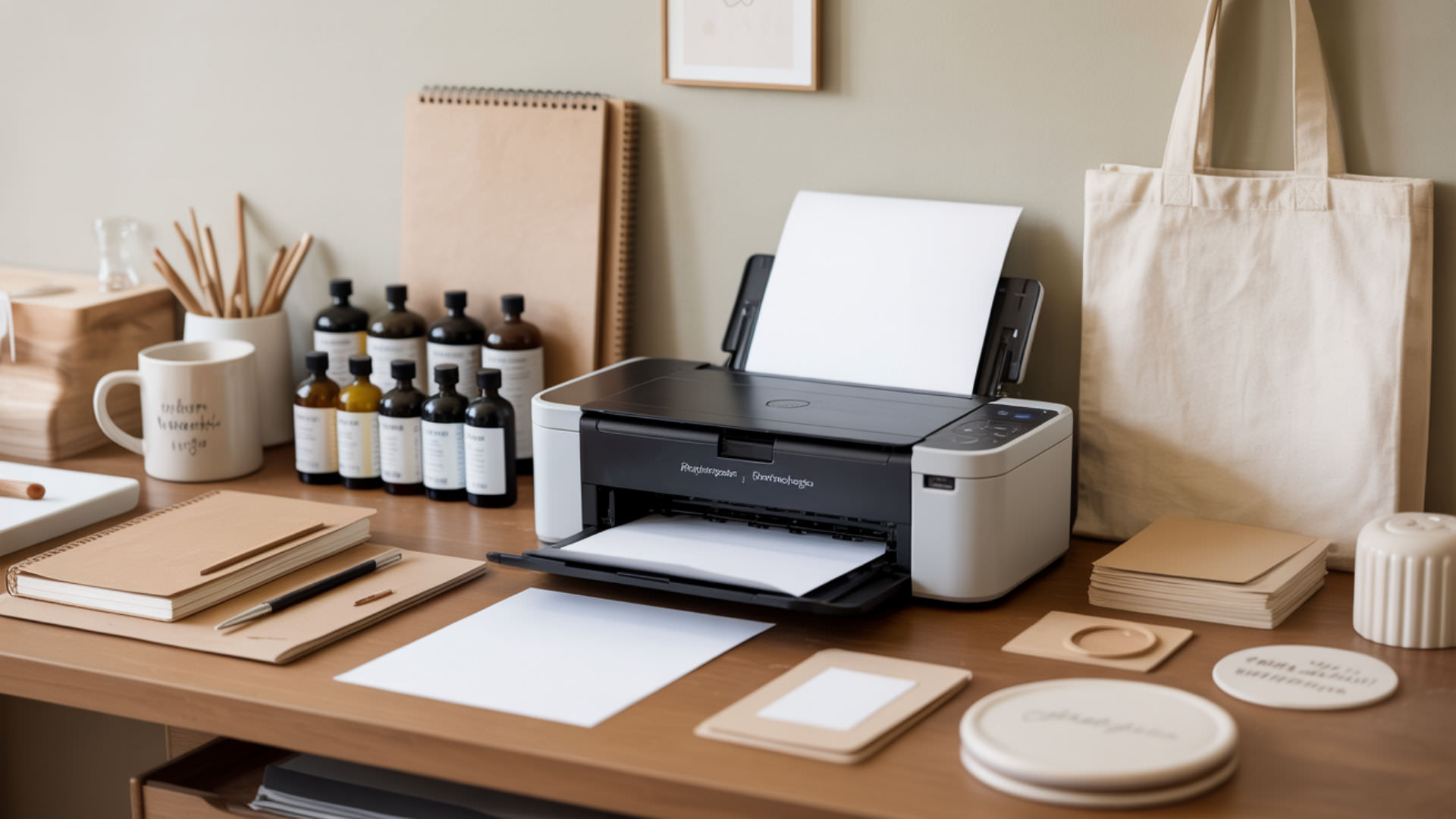Table of Contents
ToggleUnderstanding whether your printer (computing) can handle dye-sublimation printing depends entirely on its inkjet printing mechanism—specifically whether it uses heat or pressure to eject ink droplets. Because inkjet printing technology determines sublimation compatibility, our guide to dedicated sublimation printers for home use explains which hardware configurations support sublimation ink chemistry.
Key Takeaways
- Thermal inkjet printers (HP, Canon) heat ink during ejection, which prematurely activates sublimation dye and causes permanent clogging.
- Piezoelectricity-based printers (Epson) use crystal-driven pressure to eject ink without heat, enabling safe sublimation ink handling.
- Only brand-new, never-inked piezoelectric printers convert successfully—residual pigment causes irreversible nozzle blockages.
Can You Use a Regular Printer for Sublimation?
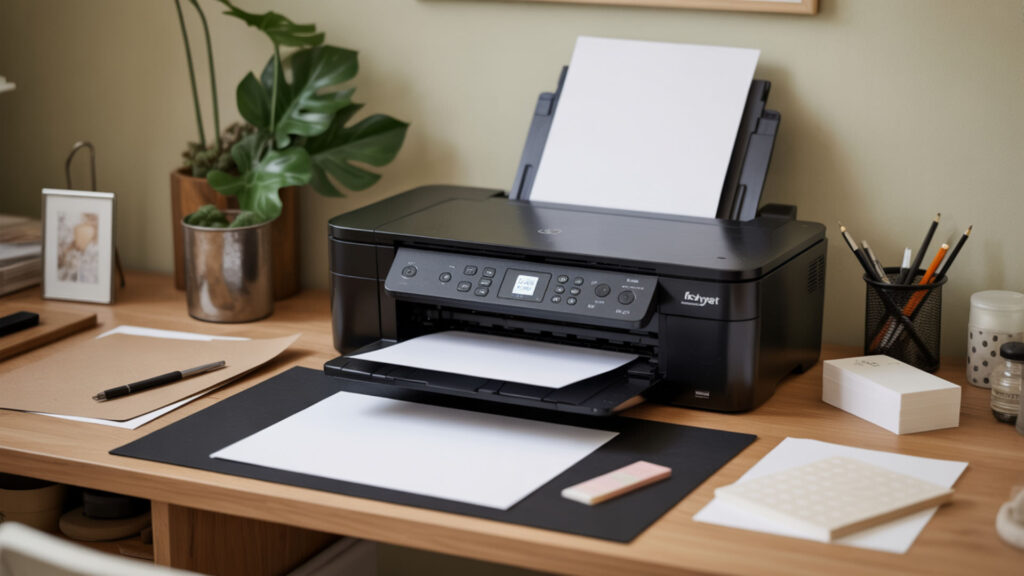
Regular printers using thermal inkjet technology cannot process sublimation ink because the heat-based ejection mechanism boils the dye before it reaches paper, destroying its viscosity balance and clogging the printhead permanently. Only printers with piezoelectric actuator systems—which use mechanical pressure instead of heat—can safely eject sublimation ink without damaging internal components. For printers engineered with sublimation-safe printhead designs from the factory, see our guide to the best sublimation printers. Thermal inkjet systems rely on localized heating to eject ink droplets, which makes them incompatible with heat-sensitive sublimation dye formulations. [1]
What Is the Difference Between a Sublimation Printer and a Regular Printer?
The core difference lies in ink formulation chemistry—regular printers use pigment-based inks containing solid particles that sit on paper surfaces, while sublimation printers use disperse dye formulations designed to vaporize under heat and bond permanently with polymer-coated substrates. Pigment cannot sublimate regardless of temperature because its molecular structure prevents gas-phase transition, making standard ink physically incapable of heat transfer printing.
Can You Use Sublimation Paper in a Regular Printer?
Sublimation paper’s specialized coating rejects standard ink due to incompatible binder chemistry—regular ink lacks the adhesion agents that bond with sublimation paper’s polymer surface, causing pooling, smearing, and poor absorption. Additionally, standard ink viscosity is formulated for regular paper porosity, not the non-absorbent release coating on sublimation transfer sheets, resulting in wet, unusable prints that smudge during handling.
How Do You Convert a Standard Inkjet Printer to Sublimation?

Converting requires completely purging the ink cartridge system before introducing sublimation ink—any residual standard ink contaminates the sublimation formulation and ruins output quality. Many printers include a microchip on cartridge components that blocks third-party ink recognition, requiring chip reset tools or compatible aftermarket cartridges. The new ink formulation must match piezoelectric droplet behavior specifications to prevent clogging or color inaccuracy.
Can Any New Printer Be Converted to Sublimation?
Only printers utilizing the piezoelectric effect for ink ejection can convert to sublimation—this includes most Epson inkjet models but excludes HP and Canon printers entirely. Thermal inkjet printers heat ink to 300°F+ during ejection, which triggers premature sublimation inside the printhead and causes catastrophic clogging within minutes of use. Verify your printer’s printhead technology before attempting any conversion.
Can a Previously Used Printer Be Converted to Sublimation?
Previously used printers carry significant conversion risks because residual pigment ink dried inside nozzle channels creates permanent blockages that sublimation ink cannot dissolve. Even thorough flushing leaves microscopic ink viscosity residue that contaminates sublimation output with color shifts and streaking. For reliable results, conversion requires brand-new printers that have never processed any ink type.
Can You Use Regular Ink or Regular Paper for Sublimation?

Sublimation transfer printing requires both disperse dye ink and specialized transfer paper—substituting either component with regular alternatives produces complete transfer failure. Pigment-based regular ink does not vaporize under heat press temperatures (385–400°F) and simply smears or burns rather than bonding with substrates. Because ink formulation determines transfer success in both sublimation and regular printing, our guide on using sublimation printers for regular printing explains cross-compatibility limitations.
Can You Print on Sublimation Paper Using Standard Ink?
Standard ink printed on sublimation paper produces unusable results because the binder agents in regular ink cannot adhere to sublimation paper’s release coating. When heat-pressed, pigment particles remain on the paper surface rather than transferring—any apparent transfer washes off immediately because pigment lacks the molecular structure to bond with polyester fibers or polymer coatings.
What Happens if Sublimation Ink Is Printed on Regular Paper?
Sublimation ink printed on regular paper wicks deep into absorbent fibers, drastically reducing ink viscosity concentration at the surface and producing faded, low-saturation transfers. The uncontrolled absorption also increases nozzle clogging risk as the printhead works harder to maintain coverage. Additionally, regular paper releases moisture during pressing that creates steam ghosting and blurry image edges.
How Do You Do Sublimation Printing Step-by-Step?

Sublimation transfer printing follows a precise workflow where disperse dye must vaporize completely and bond with polymer substrates under controlled heat and pressure conditions.
- Design and print your image onto sublimation paper using a piezoelectric printer loaded with sublimation ink. Mirror the image horizontally before printing, as the transfer reverses during pressing.
- Preheat your heat press to 385–400°F and allow 5–10 minutes for temperature stabilization. Inconsistent heat causes uneven dye vaporization and patchy transfers.
- Position the printed transfer face-down on your polyester substrate and secure with heat-resistant tape. Paper movement during pressing creates ghosting artifacts.
- Press at medium-firm pressure for 40–75 seconds depending on substrate thickness. Disperse dye requires sustained heat to fully vaporize and penetrate polymer coatings.
- Remove the transfer paper immediately while hot to prevent dye back-transfer. Allow the substrate to cool before handling to set the permanent bond.
Which Types of Regular Printers Can Be Converted to Sublimation?
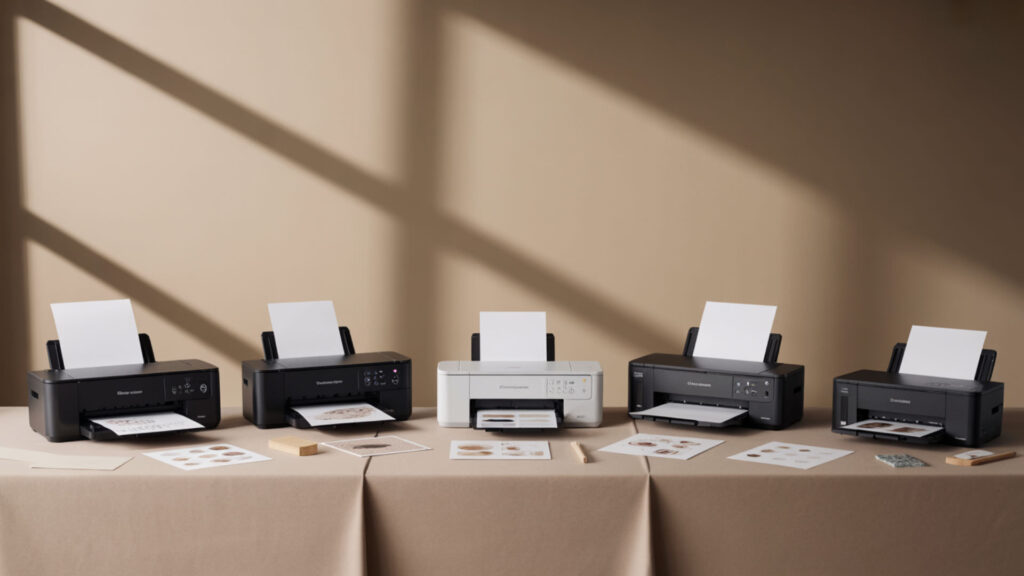
Conversion success depends entirely on piezoelectric actuator technology in the printhead—this pressure-based mechanism safely handles sublimation ink formulation without the heat damage that destroys thermal printhead systems. The inkjet printing platform must accept sublimation ink’s specific viscosity and droplet characteristics, which rules out laser printers, thermal inkjets, and most non-Epson consumer models regardless of brand or price point. Epson’s Micro Piezo technology uses mechanical pressure rather than heat to eject ink droplets, which is why these printers are adaptable for sublimation workflows. [2]
Can Certain Inkjet Printers Be Used for Sublimation?
Inkjet printers using piezoelectricity for ink ejection—primarily Epson EcoTank and Workforce models—can process sublimation ink safely because their crystal-driven printheads operate at room temperature. Verify the printhead technology before purchase, as some budget inkjets from otherwise compatible brands may use thermal mechanisms. Models like the ET-2720, ET-2800, ET-4760, and ET-15000 are proven conversion candidates.
Are Tank-Style Printers Suitable for Sublimation Conversion?
Tank-style printers without traditional ink cartridge systems offer significant conversion advantages—their refillable reservoirs allow complete flushing and easy sublimation ink loading without chip-based restrictions. The open ink viscosity pathway in tank systems also simplifies maintenance and reduces clogging risk during the transition period. Epson EcoTank models specifically designed around this architecture convert most reliably.
What Printers Work Well for Sublimation Conversion?
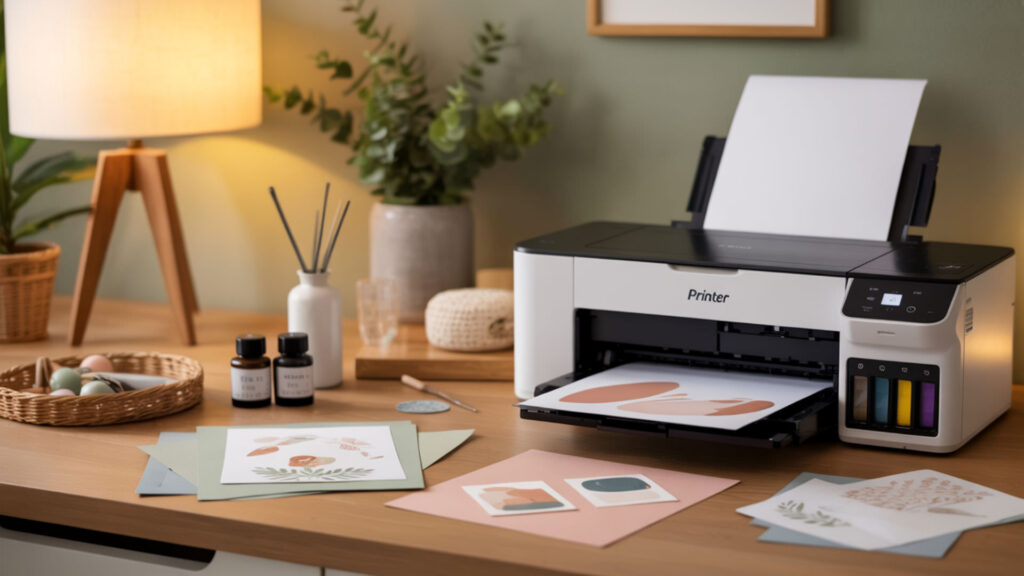
Successful conversion requires printers with piezoelectric effect printheads, compatible ink formulation viscosity specifications, and accessible ink delivery systems that tolerate third-party consumables. Epson dominates this category because their Micro Piezo technology handles disperse dye chemistry without modification. For comparison with purpose-built alternatives, our review of Sawgrass dye-sublimation printers demonstrates what dedicated sublimation hardware offers over converted regular printers.
Can a Previously Used Inkjet Printer Be Repurposed for Sublimation?
Repurposing previously used printers requires extensive inkjet printer maintenance including multiple flush cycles, nozzle cleaning procedures, and sometimes printhead replacement to eliminate contamination. Even then, microscopic residue in nozzle chambers frequently causes color contamination and inconsistent output. The cost of flushing supplies and potential printhead damage often exceeds simply purchasing a new conversion-ready printer.
Can Larger-Format Inkjet Printers Be Converted for Sublimation Use?
Wide-format printers (computing) follow identical conversion principles—piezoelectric printheads accept sublimation ink formulation regardless of print width capabilities. Models like the Epson WF-7710, WF-7720, and ET-15000 offer 13×19-inch output for larger apparel and signage projects. Ink consumption increases proportionally with print area, making cost-per-print calculations critical for large-format sublimation economics.
Do You Need a Special Printer for Sublimation?
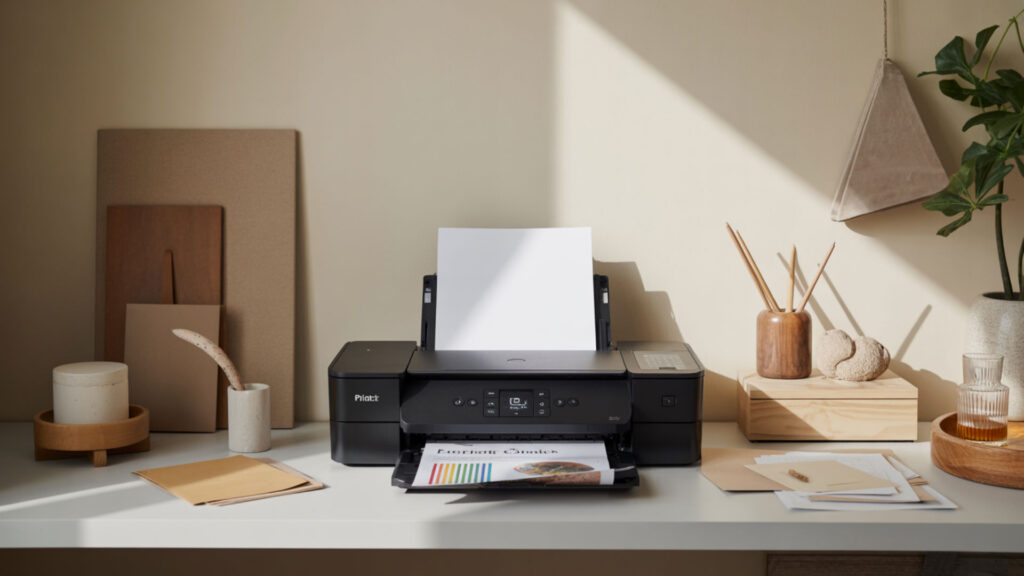
Sublimation requires either a purpose-built sublimation printer or a convertible inkjet with piezoelectricity-based ink ejection—thermal inkjet models cannot be adapted regardless of modifications attempted. The hardware distinction centers on printhead mechanics: piezoelectric crystals flex under electrical charge to push ink droplets, while thermal systems boil ink using resistive heating elements incompatible with heat-sensitive sublimation dyes.
Will Any Printer Work for Sublimation Printing?
Most consumer printers cannot perform sublimation because their printhead designs and ink viscosity specifications reject sublimation ink chemistry. HP, Canon, and Brother thermal inkjet models fail immediately, while laser printers use entirely incompatible toner-fusion technology. Only Epson piezoelectric inkjets and dedicated sublimation systems (Sawgrass, Epson SureColor F-series) successfully process sublimation ink.
Are All Printers Capable of Sublimation?
Approximately 15–20% of consumer inkjet printers can technically handle sublimation conversion—specifically those using piezoelectric actuator technology in their printheads. Thermal inkjet mechanisms in HP and Canon printers heat ink to vaporization temperatures during normal operation, which destroys sublimation dye before it reaches paper. This hardware incompatibility cannot be overcome through software, settings, or ink modifications.
Ready to Convert Your Printer for Sublimation?
Successful sublimation conversion starts with confirming your printer uses piezoelectricity rather than thermal ink ejection—Epson EcoTank models offer the most reliable conversion pathway with accessible tank systems and proven ink formulation compatibility. Start with a brand-new unit to avoid contamination issues, invest in quality sublimation ink and paper, and expect a learning curve as you dial in color profiles and pressing parameters.
Frequently Asked Questions
1. Can you switch a sublimation printer back to a regular printer?
Switching back requires complete system flushing using cleaning solution to purge all sublimation ink from tanks, lines, and printhead nozzles—a process consuming $20–$50 in supplies and risking permanent clogging. Even thorough inkjet printer maintenance rarely eliminates all dye residue, causing color contamination in subsequent regular prints. Most users dedicate converted printers exclusively to sublimation rather than attempting reversals.
2. Can sublimation ink be used in a normal inkjet printer?
Sublimation ink only works in inkjet printing systems using piezoelectric printheads—loading it into thermal inkjet printers (HP, Canon) causes immediate clogging as heat vaporizes the dye inside nozzle chambers. Even compatible Epson printers require brand-new units never exposed to standard ink, as pigment residue contaminates sublimation output with color shifts and streaking that cannot be corrected.
3. What is the most affordable option for sublimation printing?
Converting an Epson EcoTank printer (ET-2800 at $200–$250) with third-party sublimation ink ($25–$40 for a full set) offers the lowest entry cost at approximately $250–$300 total. Dedicated sublimation printers like the Epson F170 ($399–$449) cost more upfront but include manufacturer support and warranty coverage. Factor in sublimation paper ($15–$25 per 100 sheets) and a heat press ($150–$300) for complete startup budgeting.
4. Can any basic inkjet printer be used for sublimation?
Basic inkjet printers using thermal inkjet technology—which includes most HP, Canon, and budget Brother models—cannot process sublimation ink under any circumstances due to heat-based ejection mechanisms. Only piezoelectric inkjet printers, predominantly from Epson’s EcoTank and Workforce lines, convert successfully. Verify printhead type in specifications before purchasing any printer intended for sublimation conversion.
5. Do office supply stores offer sublimation printers?
Major office supply retailers like Staples and Office Depot stock convertible Epson EcoTank printers but rarely carry dedicated sublimation systems like Sawgrass or Epson’s F-series. Online retailers (Amazon, specialty sublimation suppliers) offer broader selection including complete conversion kits with ink, paper, and ICC profiles. Authorized Epson and Sawgrass dealers provide dedicated sublimation printers with full manufacturer warranty support.
References
- Desalted duck egg white peptides promote calcium uptake and modulate bone formation in the Retinoic acid-induced bone loss rat and caco-2 cell model. (n.d.). PMC Home. https://pmc.ncbi.nlm.nih.gov/articles/PMC5452220/
- Desalted duck egg white peptides promote calcium uptake and modulate bone formation in the Retinoic acid-induced bone loss rat and caco-2 cell model. (n.d.). PMC Home. https://pmc.ncbi.nlm.nih.gov/articles/PMC5452220/



